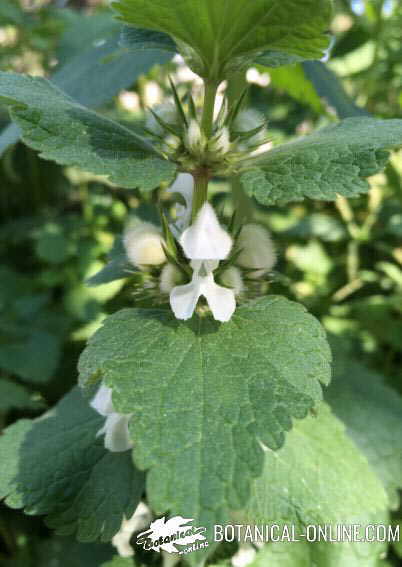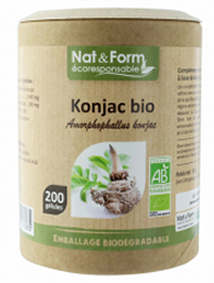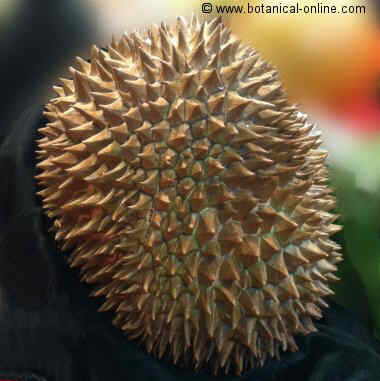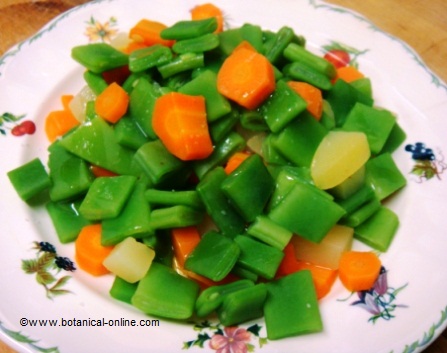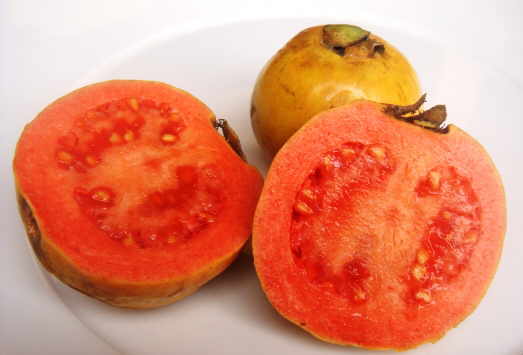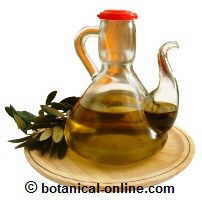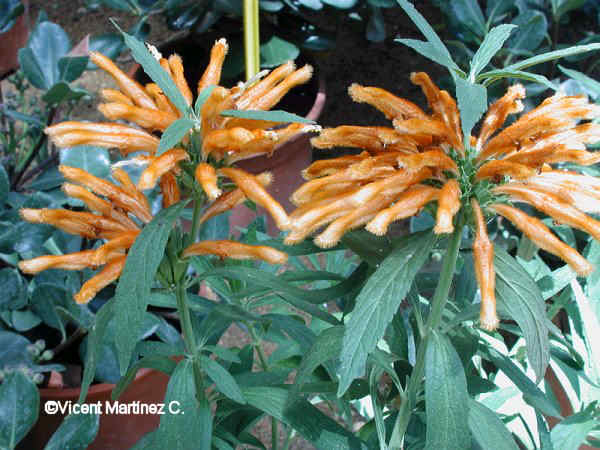Contents
What is a field mustard?
Sinapis arvensis characteristics
Common English name
Charlock mustard, wild mustard, Field mustard, charlock
Etymology: the word ‘mustard’ derives from the Latin “Mustum ardens”, which literally means “burning wine”. This derives from an ancient preparation made with grape juice and mustard, that had a burning taste.
Scientific name: Sinapis arvensis
Taxonomic synonym:
Brassica kaber (DC.) L.C. Wheeler
Brassica kaber var. pinnatifida (Stokes) L.C. Wheeler
Brassica kaber var. schkuhriana (Rchb.) L.C. Wheeler
Sinapis arvensis ssp. arvensis L.
Sinapis arvensis var. orientalis (L.) W.D.J. Koch & Ziz
Sinapis arvensis var. schkuhriana (Rchb.) Hagenb.
* See: Field mustard in other languages
Family: Brassicaceae or Cruciferae
Habitat: plant native to Europe and naturalized in North America. We can find wild mustard on roadsides, cereals fields, waste lands and dumps.
Botanical description of field mustard
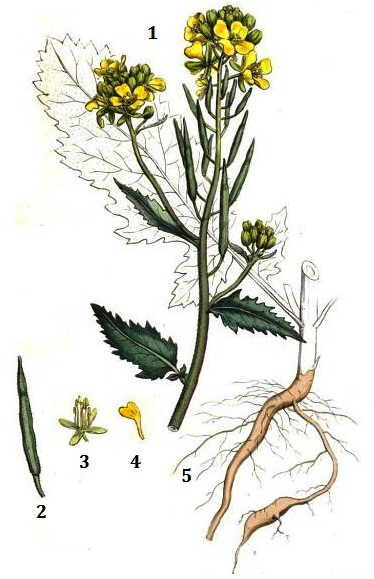
Inflorescence (1), the fruit silique-shaped (2), its flower (3) consisting of four crossed petals (4); rhizomatous root system (5).
Field mustard (Sinapis arvensis) is a short annual plant, about 20 to 60 centimeters high.
It is characterized by yellowish rhizomatous roots, which have been used as food in antiquity.
Cylindrical stem, rough to the touch and very branched.
Leaves alternate, oval-shaped with toothed margins. The leaves are pubescent like the stem.
The basal leaves have a rough petiole, divided into 2 or 3 pairs of lobes, being the terminal lobe the largest and dentate. They are about 30 centimeters long, so they are longer than the upper leaves. The upper leaves are sessile, serrated margin and not lobed.
Inflorescence erect. Mustard flowers are stalked, yellow, formed by four crossed petals (characteristic form of Brassicae or cruciferous plants). Hermaphrodites. The calyx consists of four equally crossed sepals. It contains six stamens, of which 4 are longer.
These flowers give off a pleasant scent and are good to produce honey. It blooms from February to October.
![]() More information on mustard
More information on mustard


